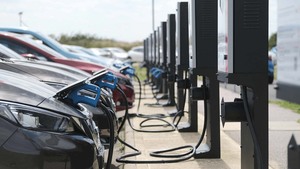According to Gartner, automakers will continue to battle with alterations caused by software and electrification’s expanding roles in 2024, ushering in a new phase for electric vehicles.
“New OEM incumbents want to heavily redefine the status quo in automotive,” said Pedro Pacheco, vice president of research at Gartner. “They brought new innovations that simplify production costs such as centralised vehicle architecture or the introduction of gigacastings that help reduce manufacturing cost and assembly time, which legacy automakers had no choice to adopt to survive.”
Gartner believes that by 2027, next-generation battery electric vehicles (BEVs) will be less expensive to construct than similar internal combustion engines (ICEs). As OEMs continue to disrupt their manufacturing operations in tandem with product design, BEV production costs will fall far faster than battery costs in the next years.
“This means BEVs will reach ICE cost parity much faster than initially expected, but at the same time, it will make some repairs of BEVs considerably costlier,” said Pacheco.

Gartner projects that by 2027, the average cost of an EV body and battery catastrophic accident repair would rise by 30 percent. As a result, automobiles involved in an accident may be more likely to be written off since the repair costs more than the residual value. Similarly, more expensive collision repairs may result in higher insurance rates or the refusal of insurance companies to cover specific automobile models.
The cost of EV repair cannot be underestimated
According to Gartner, rapid reductions in BEV production costs should not come at the expense of increasing repair costs, since this may result in customer backlash in the long term. New means to manufacture a BEV must only be used in conjunction with processes that assure minimal repair costs.
“With the perceived promise of easy gains, many start-ups gathered into the EV space – from automakers to EV charging – and some are still heavily dependent on external funding, leaving them particularly exposed to market challenges,” said Pacheco.“ In addition, EV-related incentives are being progressively phased out in different countries, which makes the market more challenging for incumbents.”
Gartner predicts that by 2027, 15% of EV companies founded since the last decade will be acquired or bankrupt.
“This does not mean the EV sector is crumbling. It is simply entering a new phase where companies with the best products and services will win over the remaining,” said Pacheco.
This implies that OEMs success in this market is now significantly influenced by their ability to meet the demands of early mass EV adopters.
As ever, the topic of EV and fleet electrification is a hot topic at the moment. Many of our clients are constantly chasing ESG targets with the TCO cost of EV and the impact of fleet budgets overall. Costs are clearly coming down for EV production but getting your fleet strategy in place is very important to ensure a sustainable and efficient fleet.



